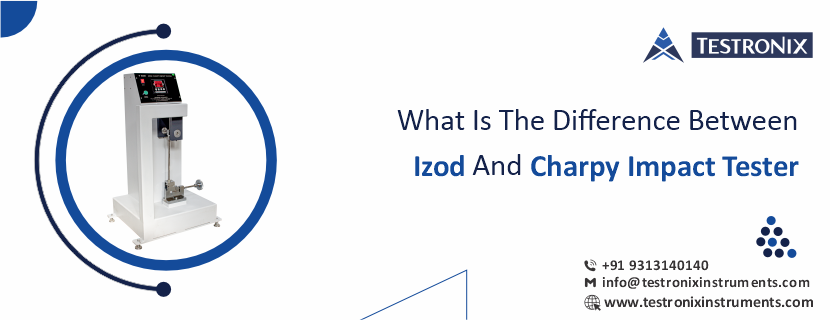Reviewed by Anurag Mishra (Sr. Technical Consultant)

When talking about Impact Testing, two of the most popular methods are IZOD testing and Charpy testing. But what is the difference between these two tests? What do they measure, and when should each test be used?
In this blog post, we'll explore the differences between IZOD and Charpy Impact Testing, their individual benefits and drawbacks, and when to use them in your application. We'll also look at specialized impact testers available on the market today that can easily handle both tests. Read on to learn more!
The IZOD and Charpy impact testers are both used to measure the impact resistance of materials, but they are different in terms of the type of impact and the way the test is conducted.
The IZOD test uses a pendulum-type impact energy to measure the resistance of a material to impact from a single, relatively high-energy load. The test is commonly used for plastics and other brittle materials.
The Charpy test, on the other hand, uses a smaller pendulum with a weight of only a few kilograms, to deliver a more concentrated impact energy. The test is used to evaluate the ability of a material to absorb energy in a more ductile manner. It is commonly used to test the toughness of steels and other metals.
Thus, the IZOD test is used to measure brittle materials resistance to impact and Charpy test is used to measure ductile materials resistance to impact.
As we know, IZOD and Charpy are two types of impact testers, which are used to determine the resistance of a material to fracture when exposed to an impact force.
As mentioned earlier, the main difference between IZOD and Charpy is that IZOD is used to test brittle materials, while Charpy is used to test ductile materials. Both tests involve striking a sample of the material with a pendulum, but the IZOD test uses a smaller pendulum and the Charpy test uses a heavier one. The amount of energy absorbed by the material during the tests is measured, and this data is used to calculate the toughness of the material.
In general, ductile materials such as metals are more resistant to impact than brittle materials such as ceramics. This means that the Charpy test is more challenging, and thus it can give more accurate results for metals. The IZOD test is less challenging and so it is typically used for testing plastics and other relatively soft materials.
When it comes to choosing the right impact tester for your needs, there are a few things you need to take into consideration.
The most important thing is the material you will be testing. Impact testers are designed to test different materials, so you need to make sure you get one that is designed for the specific material you will be testing.
Another thing to consider is the size of the samples you will be testing. Some impact testers can only test small samples, while others can accommodate larger samples.
Finally, you need to decide what type of data you need from the tests. Some impact testers only provide basic data, while others can provide more detailed data. Once you have considered all of these factors, you should be able to narrow down your options and choose the best impact tester for your needs.
An impact tester is a device used to determine the amount of energy absorbed by a material during fracture. The benefits of using an impact tester include:
1. Impact testers can be used to test a wide variety of materials, including metals, plastics, composites, and ceramics.
2. Impact testing can provide valuable information about a material’s behavior under dynamic loading conditions.
3. Impact testers are relatively simple and inexpensive devices, and they can be used to test small samples or large components.
4. Impact testing is a non-destructive testing method, which means that the sample being tested is not damaged during the test.
In conclusion, IZOD and Charpy Impact testers are two different machines used to measure the impact strength of materials. The IZOD tester is more commonly used for plastics and other brittle materials while the Charpy tester is typically used for metals and other tough materials.
Both instruments provide a reliable way to test material properties so that engineers can make sure their parts meet specifications.
Ultimately, both machines have their advantages and disadvantages; it just depends on what you need them for.